We Drive The BMW 1M Coupe, The Best M Car From The 2010s
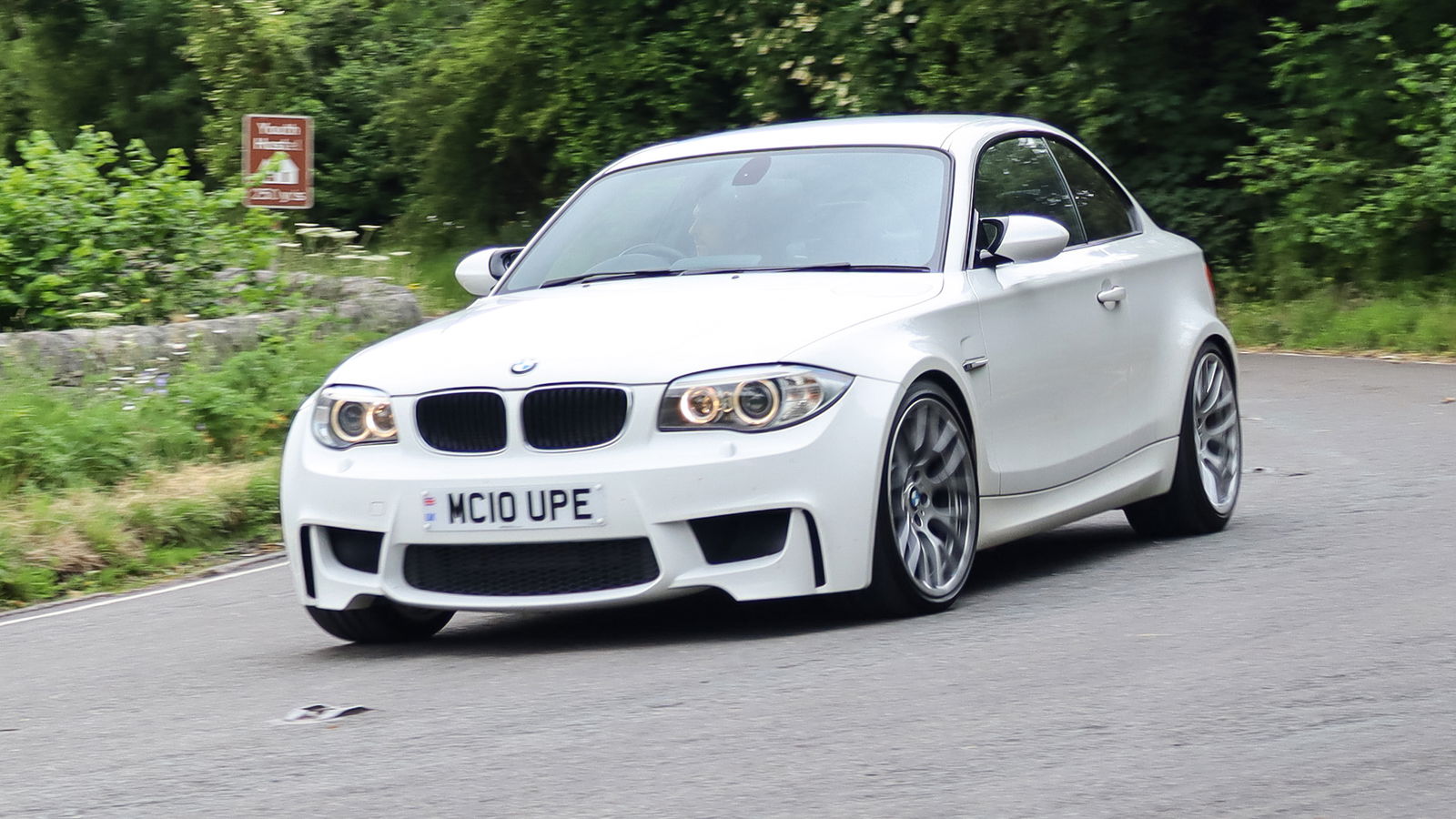
Since BMW’s Motorsport division decided to have a crack at making M cars, starting with the M1 in 1978, which cars would you argue are the era-defining cars of each decade?
For us, the ‘80s have to go to the E30 M3, the ‘90s the magnificent E39 M5, and the ‘00s the E46 M3 – specifically the CSL if you held us to gunpoint and made us choose just one. As for the ‘20s, we’re leaning towards the F90 M5 CS so far, but the M2 CS is looking awfully enticing.
Oh, we missed the 2010s, didn’t we? Well, aside from trying to find a neat editorial segue to our drive of the car you’re about to read about, we reckon that conversation is more open for debate than any other decade.
Not that it was devoid of great M cars. The E92 M3 GTS started the decade on the right foot, continued with the arrival of the F87 M2 (especially so the Competition). Some might argue the M4 GTS, though we reckon it may have just been a bit too compromised to be a true great.
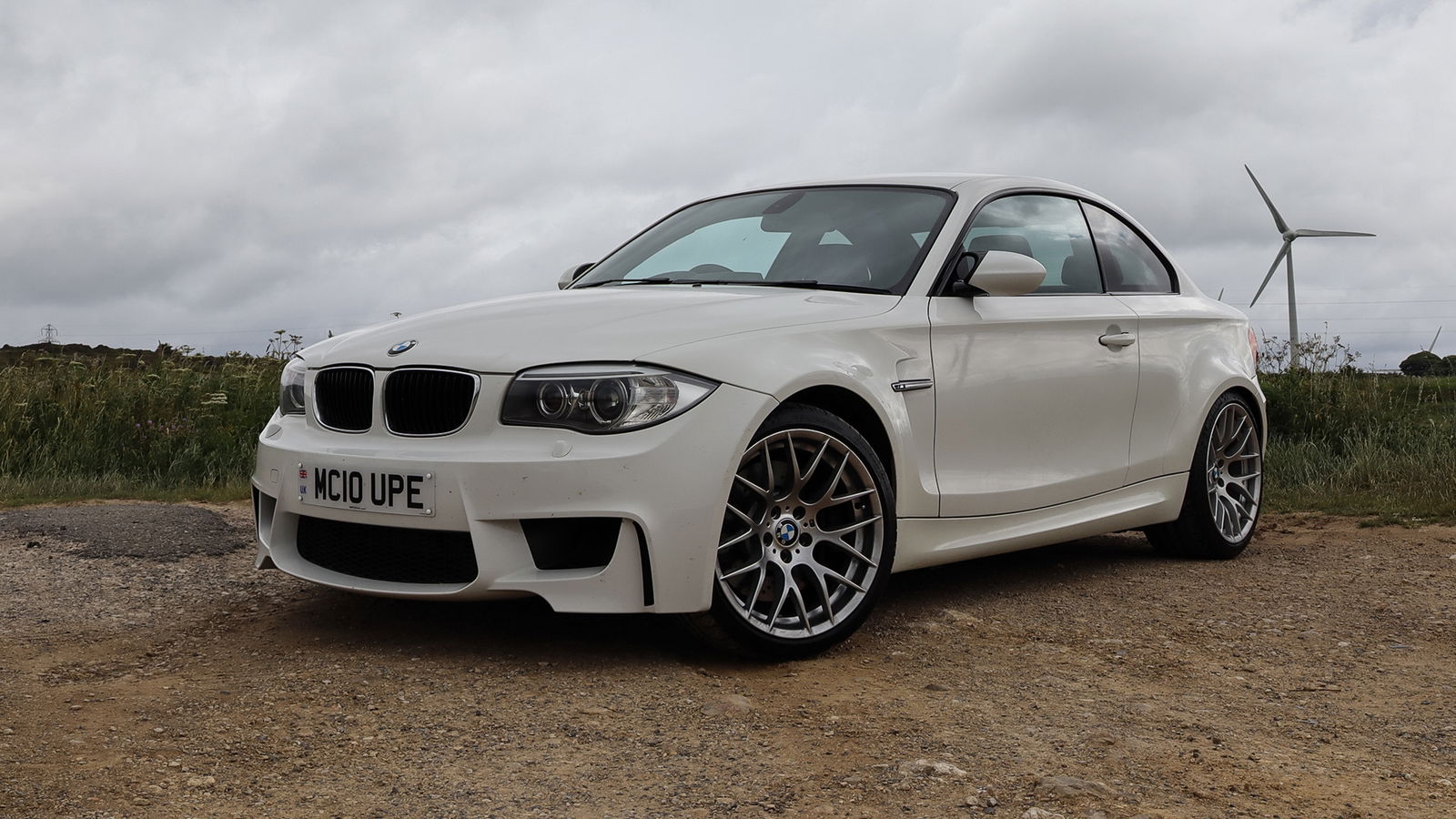
Our take on the lot, though? The least-powerful, least expensive M car of the whole decade – the BMW 1 Series M Coupe.
The 1M was pitched as a throwback to the original E30 M3. Small car, big engine, lots and lots and lots of fun. Rather than a well-polished series production car with a huge development budget, as is the case with most M cars now, though, the 1M had an air of skunkworks about it.
For a start, it was largely a parts bin special. The N54 engine was taken from the Z4 (noteworthy that it wasn’t an M-fettled engine, either), the six-speed manual gearbox was retained from the 135i and the rear axle nabbed from the E92 M3. Its tracks were wider, requiring blistered wheel arches to contain its relatively massive tyres in the process, and there were a few aggressive but subtle changes to the bodywork.
The result was a modern M-badged car measuring 4.4m long, weighing a relatively light 1.5 tonnes and with a healthy 335bhp on tap from the 3.0-litre single turbo straight-six. Oh, and a proper locking rear differential to enable big skids.
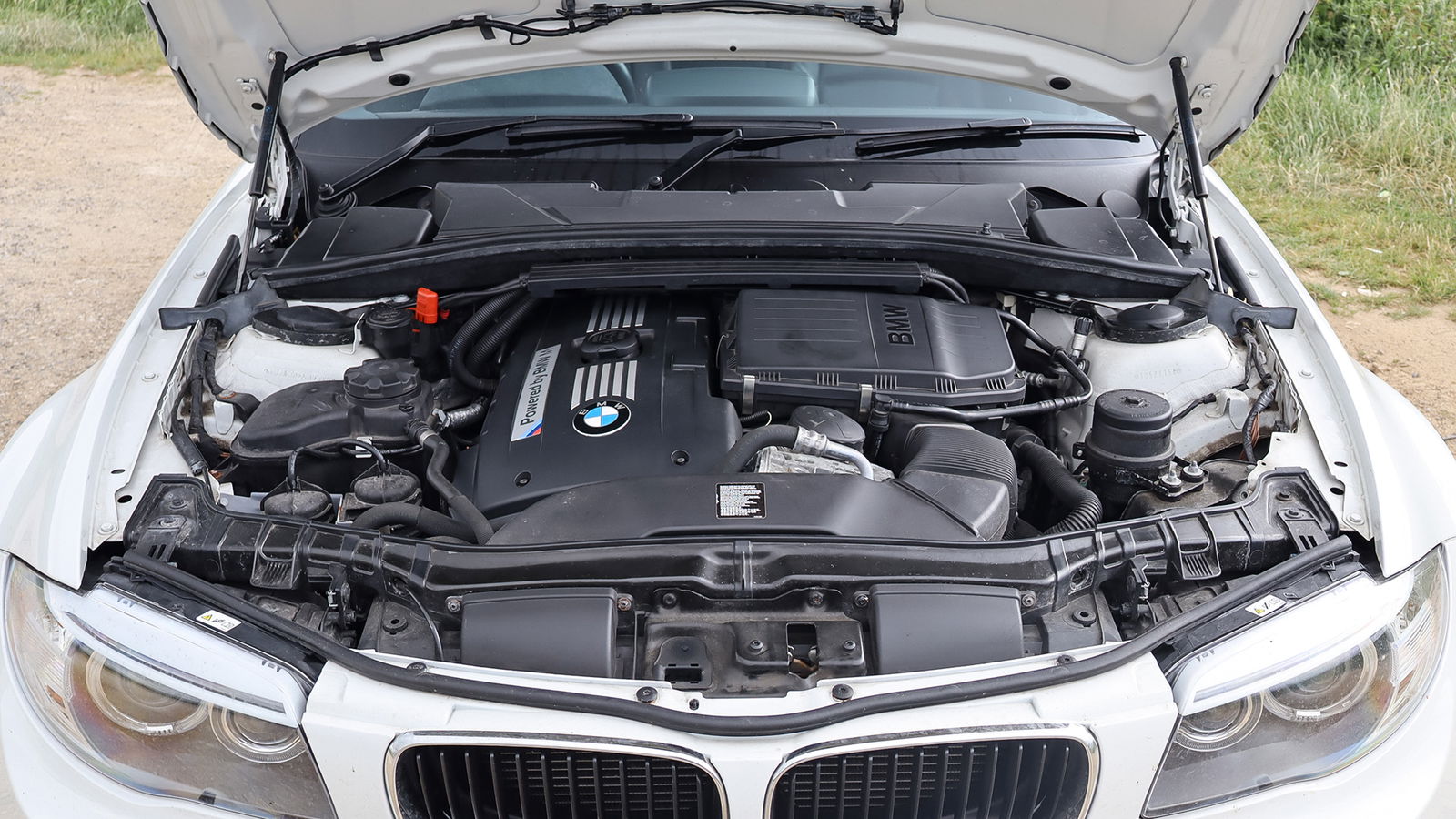
While that recipe would go on to inspire the series-production M2, that wasn’t always the intention. The 1M was a limited-run thing with only 2700 originally planned for production, yet mass demand led to around 6300 being built.
Of those, BMW UK had an allocation of just 450. Rumour has it that order books were so oversubscribed that internal orders from BMW staff had to be taken away to meet unexpectedly high customer demand.
Which makes today, sitting in BMW UK’s meticulously-kept press car, all the more special a place to be.
Not that the interior oozes M car. Sit in anything modern from BMW’s Motorsport division and it’ll be a sea of carbon fibre, tri-colour stitching and badges everywhere. In contrast, save for some smidges of Alcantara and probably fewer M badges than you’d see on an M Sport trimmed 1 Series today, there’s little to give the performance of the 1M away. That is, until you catch a glimpse of one of those gigantic rear wheel arches in the side mirror.
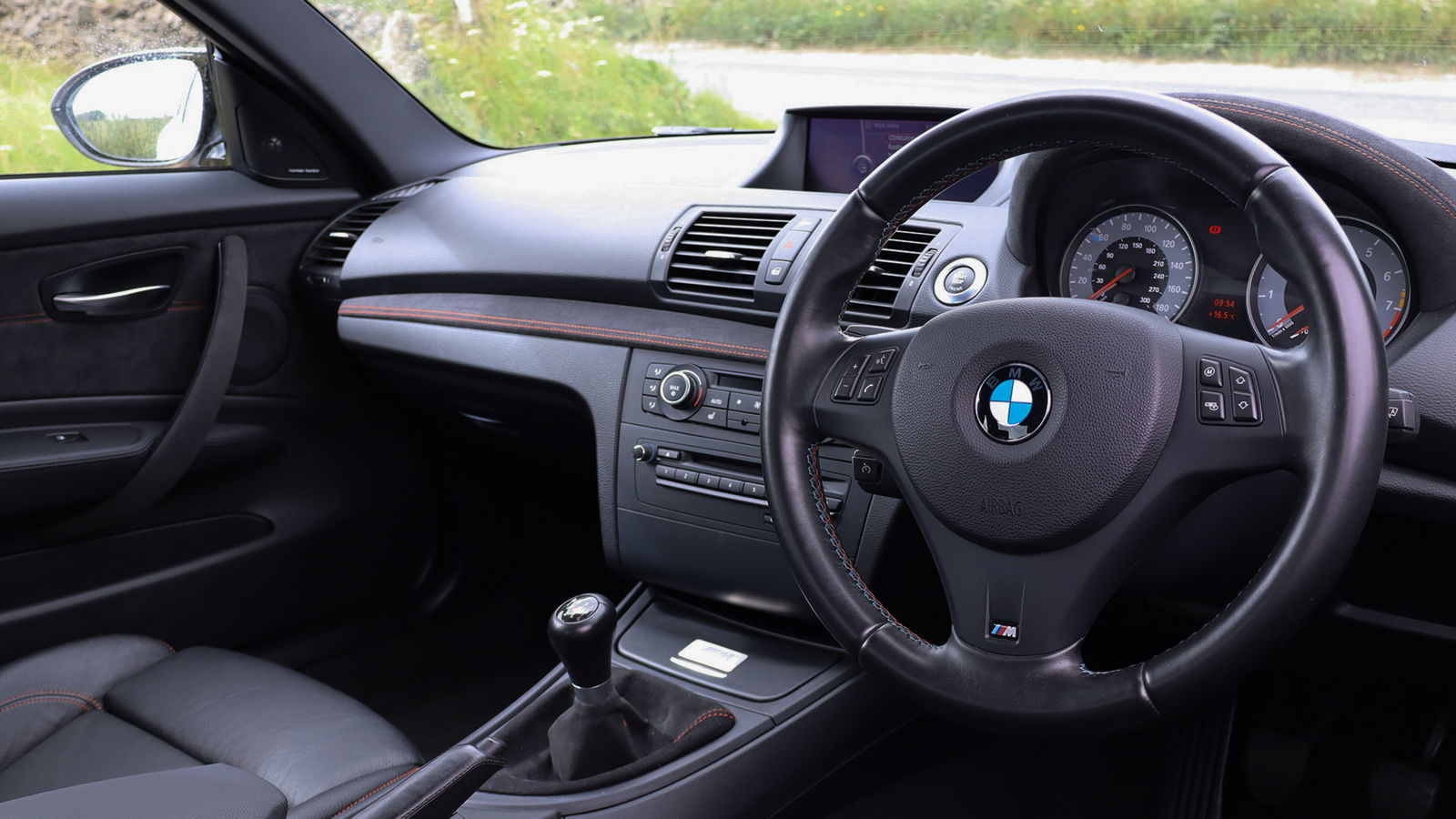
Firing up the N54 engine doesn’t really add to the theatre, either. It starts with a gentle thrum rather than a raucous hellfire. No pop and bangs here, perhaps for the better.
So far, little more than a slightly angry-looking 1 Series, then, and that vibe doesn’t really change peeling through town. It rides compliantly at low speeds, doesn’t terrorise pensioners with a cackling exhaust, and the hydraulic steering has a pretty sedate feel to it.
You begin to wonder what made the 1M so special to every car journalist in the early part of the last decade. Then you see the sign for a quiet national speed limit road, and draw your thumb to the subtly-circled ‘M’ button on the steering wheel.
It’s as though you’ve awoken a rabid squirrel prematurely from its winter hibernation. It’s not an instantaneous power delivery, with some old-school turbolag at play, the straight-six seemingly hesitant until its turbine inhales the atmosphere around it from about 3000rpm.
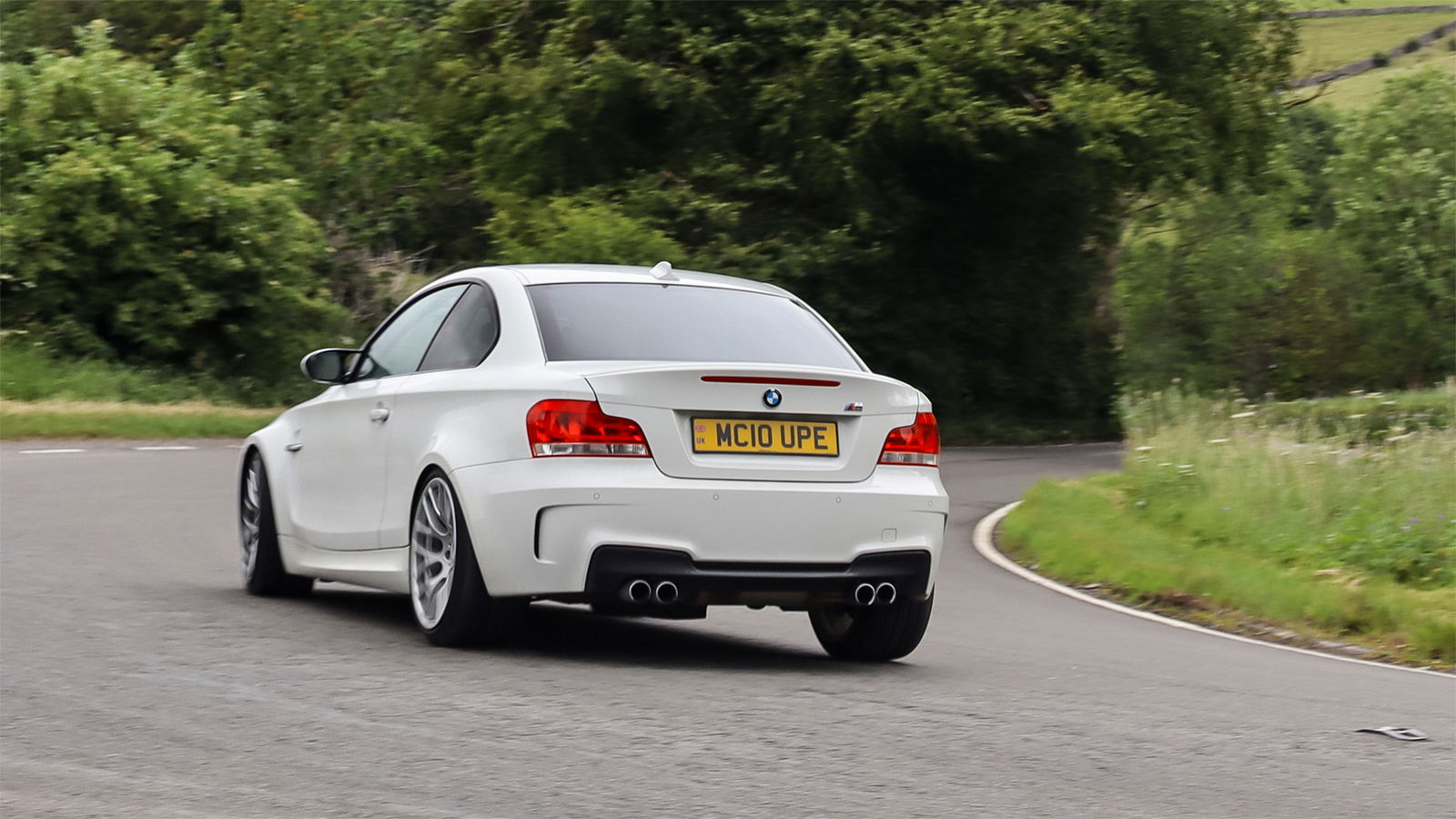
At that point, it’s like a clap of thunder hurling kinetic energy through that M3 rear axle. It shudders and shakes, but in a way that’s controllable and alive rather than overwhelming. You’ll feel the car shimmy under your backside as the straight-six symphony begins to hit a crescendo from in front of you.
Approach a corner, and then it begins to feel exactly as you’d imagine M cars of old should. Its steering isn’t super direct, but it does offer you a sense of exactly what the front end is doing at any one time. All while the rear prods your backside, telling you, “Please, let me go sideways”. Once you let it out, it’s perfectly manageable too. The last remnants of traction control in DSC Sport make you aware of its presence but rarely threaten to kill the fun.
Then, once you’re done pretending you’re Chris Harris (and reminding yourself you’re not), press the M button back again and the rodent within returns to its nest. Back to sedate, back to BMW 1 Series.
Which is what makes this the greatest M car of its time to us. The best M cars have never been one-dimensional, always offering a sublime drive that you can access day-to-day.
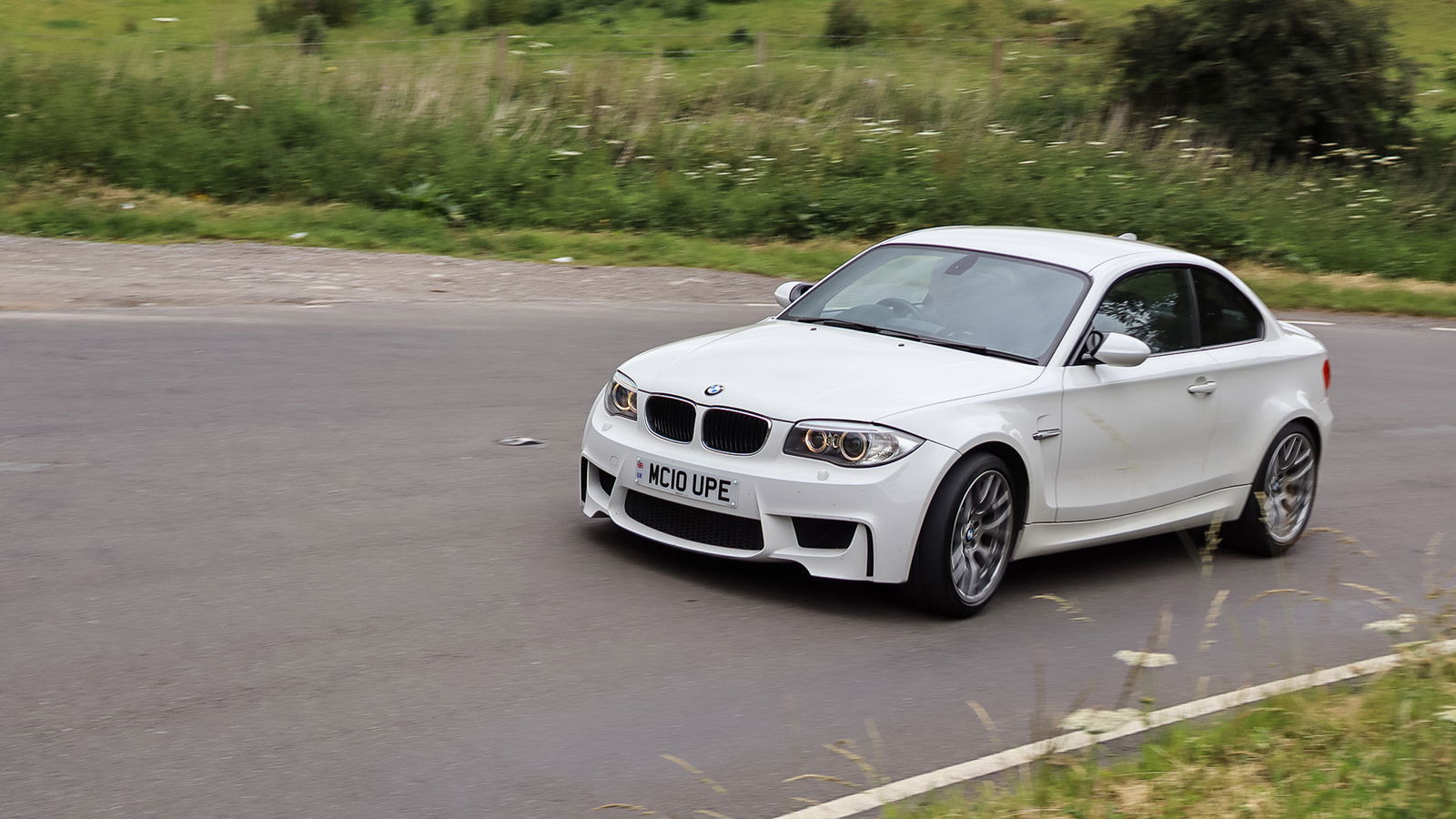
Sharp-witted, engaging and fast yet still perfectly at home grabbing an oven pizza from the supermarket on your way back from a B-road blast. The jack of all trades, and mastering them too.
Really, the only downside after driving a BMW 1M is looking at how well these cars have held value. They were a collector’s car from the get-go, and it shows. BMW has made some great cars since, but never one quite like this – and dare we say it never will again.

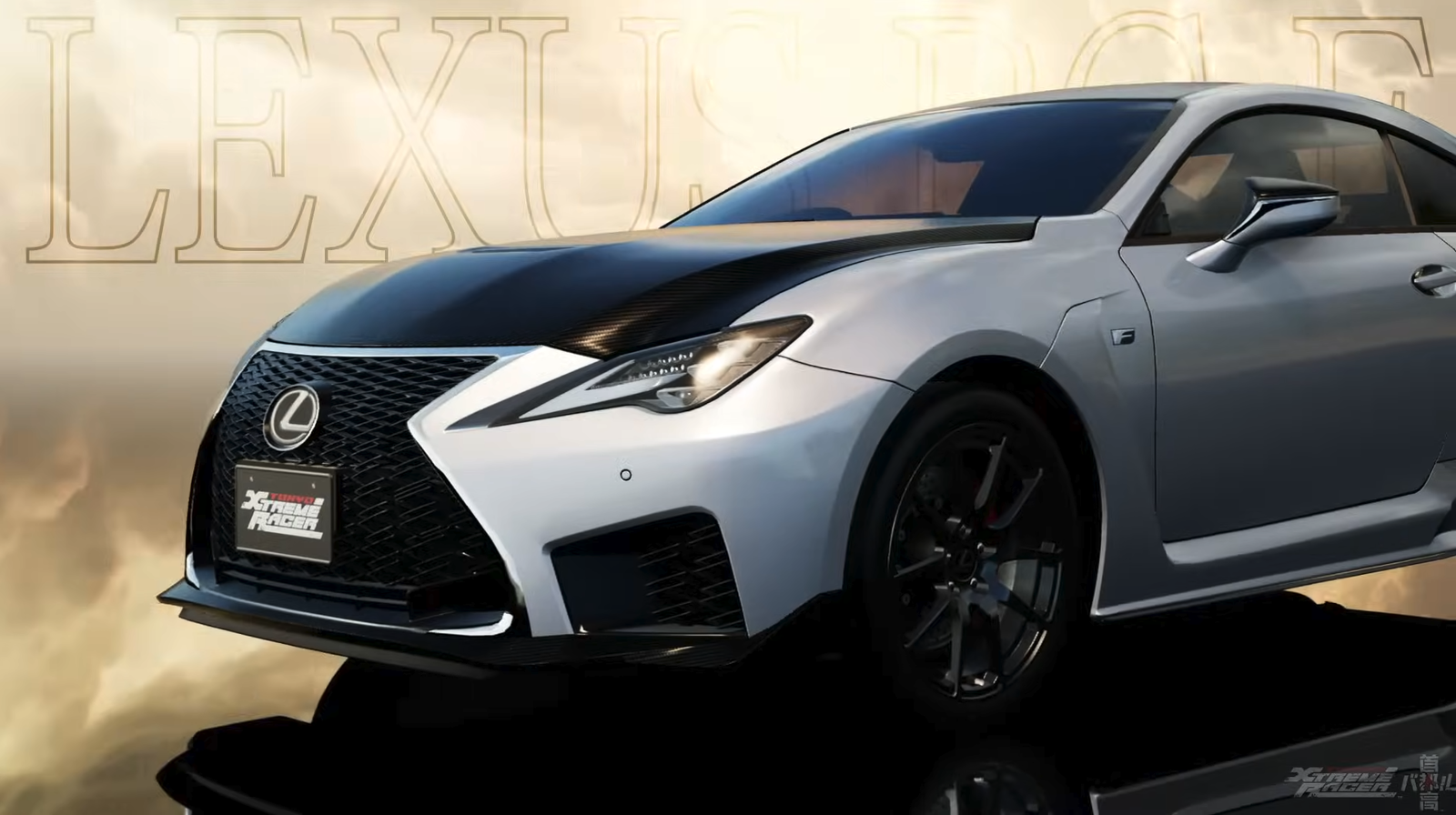

Comments